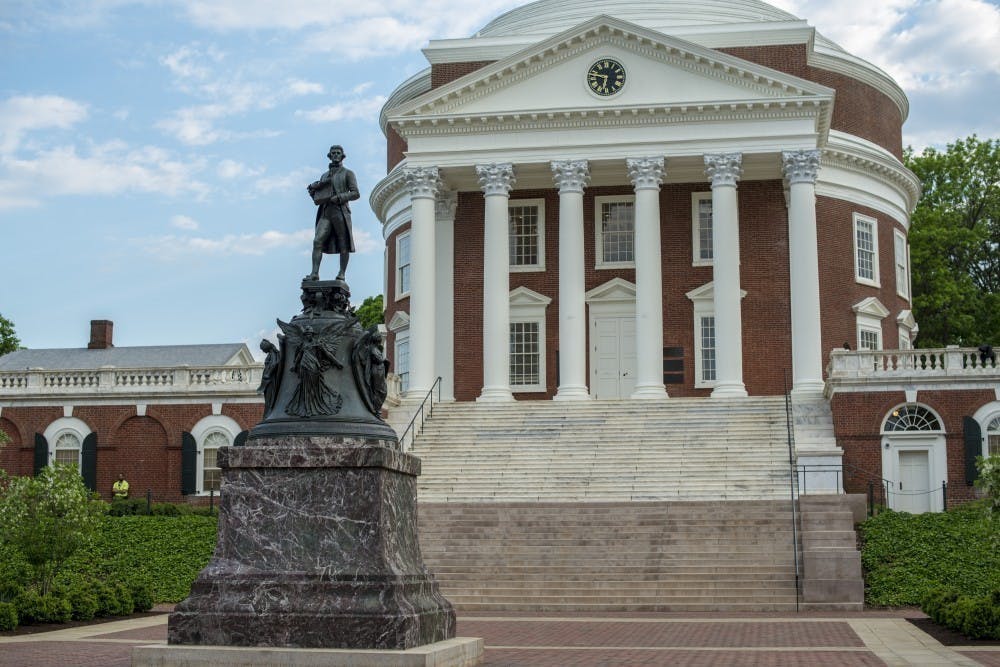The University recently began construction of the Memorial to Enslaved Laborers, a monument near Brooks Hall that will recognize the nearly 5,000 enslaved laborers who first constructed the early academical village. The memorial will also serve as a pedagogical tool, allowing people to gather and reflect on the University’s oppressive history. Building on these efforts to grapple with its past, the University should educate its student more fully about its legacy of oppression by developing a module on its history of racism and require all incoming first-years to take it.
The University’s history is entwined with racial oppression. Enslaved laborers laid the bricks of the Lawn and constructed the pillars of the Rotunda. Between 125 and 200 enslaved individuals worked and lived at the University, residing in gardens with serpentine walls tall enough to keep out the gaze of the outside world. Beatings and sexual violence were a common occurrence, including when two students mercilessly beat a 10-year-old enslaved boy named Fielding in 1838.
In the 20th Century, the University continued this legacy through Jim Crow segregation and discrimination. A student named Gregory Swanson applied to the Law School for an advanced degree in 1949, but his application was denied due to his race. Only the threat of a lawsuit by Swanson led to his admission — he entered the school to extreme hostility from white students. Throughout the ‘60s, undergraduate students like Robert Bland, Leroy Willis and Wesley Harris would pave the way for African-American students at the University, and a subsequent generation of African-Americans activists would lead the charge to hire more black faculty and create the African-American and African Studies department.
But too few University students are familiar with people like Swanson, Bland or Fielding. This is a grave problem, one that should be fixed with a pre-orientation module on the history of racism and oppression at the University. Such a module is needed for a few reasons.
First, the victims of the University’s oppression are deprived of agency as long as the vast majority of the University go unaware of their stories. Students should not float through four years at the University without acknowledging the voices that have been silenced for years.
Further, such a widespread education on the University’s oppressive history encourages students to focus on its more recent past and present. While the University is hailed as a beacon of “illimitable freedom of the human mind,” its ties to white supremacy — receiving $1,000 from the Ku Klux Klan in 1921 and fostering the study of eugenics — still reverberate today. It was not accidental that the Unite the Right targeted Charlottesville or the University’s Grounds — it was as a direct consequence of an inability to grapple with the racist legacy of Confederate monuments. Lurking under the University’s founding myths lies a long history of racial oppression and white supremacy; when more students become aware of this history, they will better recognize its impact on our present.
Finally, acknowledging the University’s history of oppression allows us to more critically examine exploitative practices that continue today. The University has failed to create material plans for a living wage and thus has a tenuous relationship with the surrounding community. The University has long led a double life between shiny myths and its underlying darkness — when we leave the wrongdoings of the University unexamined, we cannot properly create full inclusivity or resist the problems that continue today.
A series of remarkable classes, initiatives and organizations dedicated to disseminating this history currently exist. The President’s Commission on Slavery and the University has done much to publicize and honor the University’s early enslaved individuals, and the President’s Commission on the University in the Age of Segregation will perform important work in uncovering the stories of oppression at the University. All students should engage with these programs to reckon with U.Va.’s foundational basis in oppression. However, if one chooses to avoid confronting the University’s history, it is all too easy to do so, making the need for required modules clear. Of course, our University’s deep history of oppression will not be solved by a renewed focus on history alone. But in order to move forward, more students have to look back at our history with a critical eye — and the University should ensure that happens.
Jack Wilkins is an Opinion Columnist for The Cavalier Daily. He can be reached at opinion@cavalierdaily.com.







